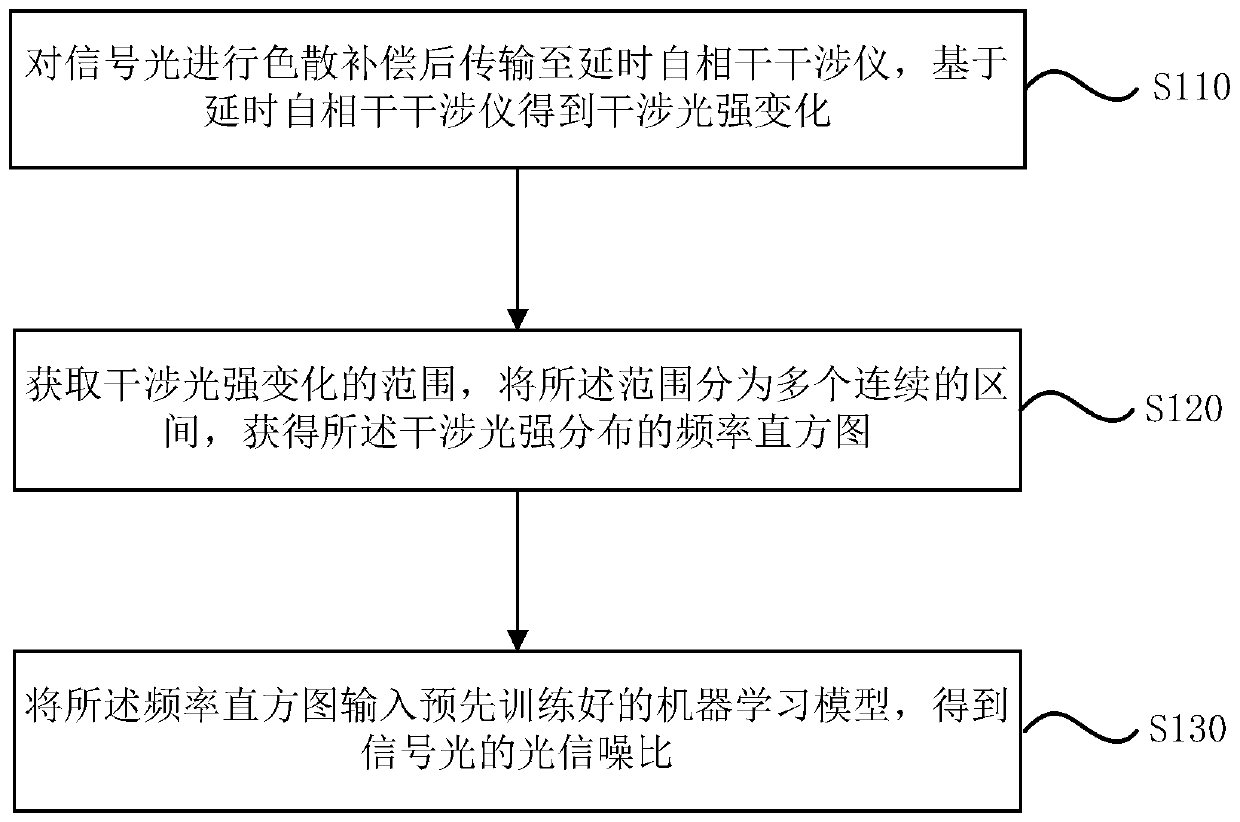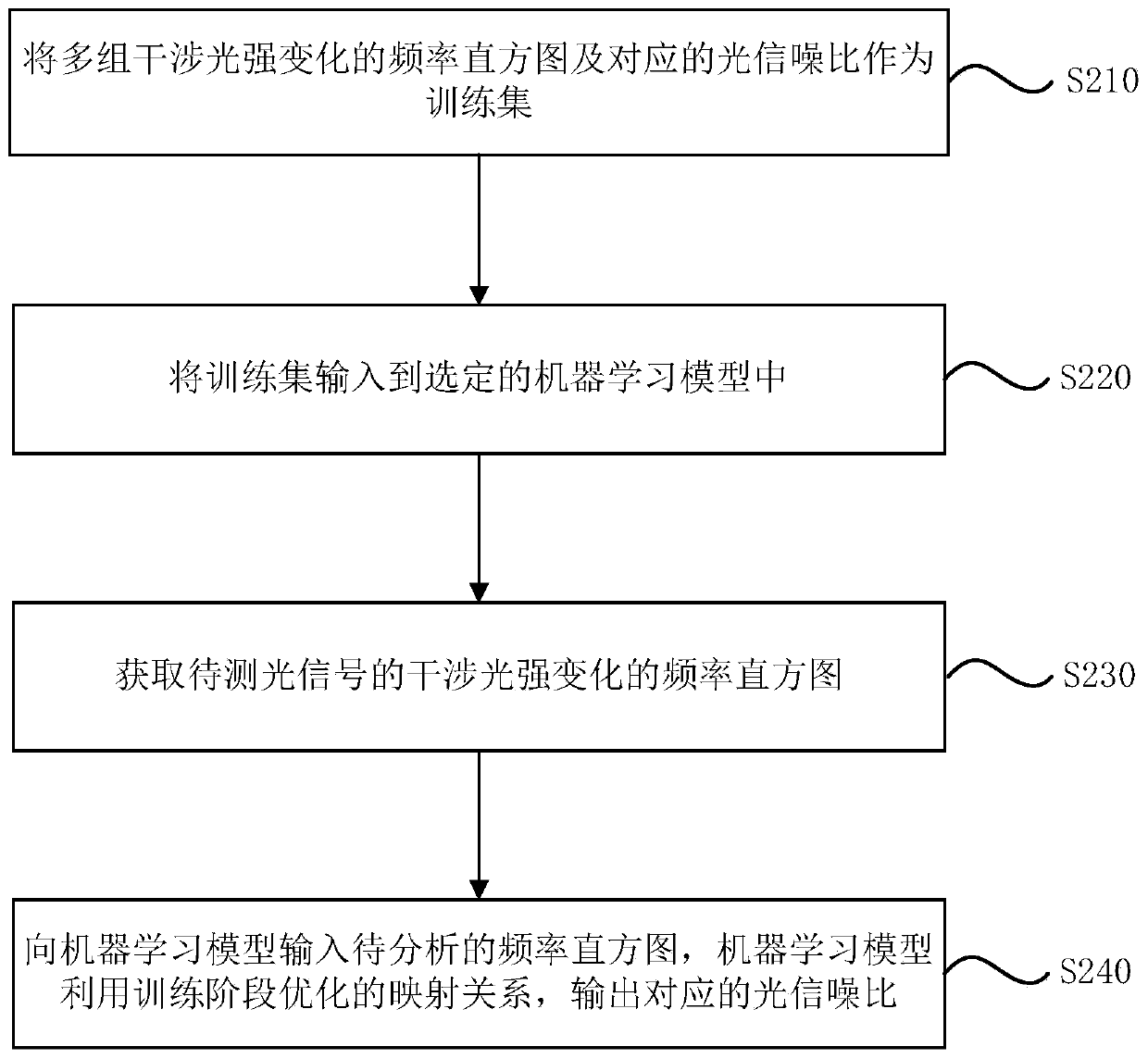Optical signal-to-noise ratio measurement method and optical signal-to-noise ratio measurement system
A technology of optical signal-to-noise ratio and measurement method, which is applied in the field of communication, can solve the problems of large measurement error, difficult optical fiber link, high cost and complexity, and achieve the effect of low cost and high precision
- Summary
- Abstract
- Description
- Claims
- Application Information
AI Technical Summary
Problems solved by technology
Method used
Image
Examples
Embodiment Construction
[0038] The present invention will be further described in detail below in conjunction with the accompanying drawings and specific embodiments.
[0039] figure 1 is a flow chart of an optical signal-to-noise ratio measurement method provided by an embodiment of the present invention, figure 1 The method may include steps S110-S130, and the steps S110-S130 will be described in detail below.
[0040] In step S110, the signal light is subjected to dispersion compensation and then transmitted to a time-delayed self-coherent interferometer, and a change in interference light intensity is obtained based on the time-delayed self-coherent interferometer.
[0041] It should be understood that performing dispersion compensation on the signal light is to compensate the dispersion introduced by the signal light during transmission.
[0042] At the same time, the inventors have found through research and experiments that the delay difference between the two arms of the delayed self-cohere...
PUM
 Login to View More
Login to View More Abstract
Description
Claims
Application Information
 Login to View More
Login to View More - R&D
- Intellectual Property
- Life Sciences
- Materials
- Tech Scout
- Unparalleled Data Quality
- Higher Quality Content
- 60% Fewer Hallucinations
Browse by: Latest US Patents, China's latest patents, Technical Efficacy Thesaurus, Application Domain, Technology Topic, Popular Technical Reports.
© 2025 PatSnap. All rights reserved.Legal|Privacy policy|Modern Slavery Act Transparency Statement|Sitemap|About US| Contact US: help@patsnap.com



